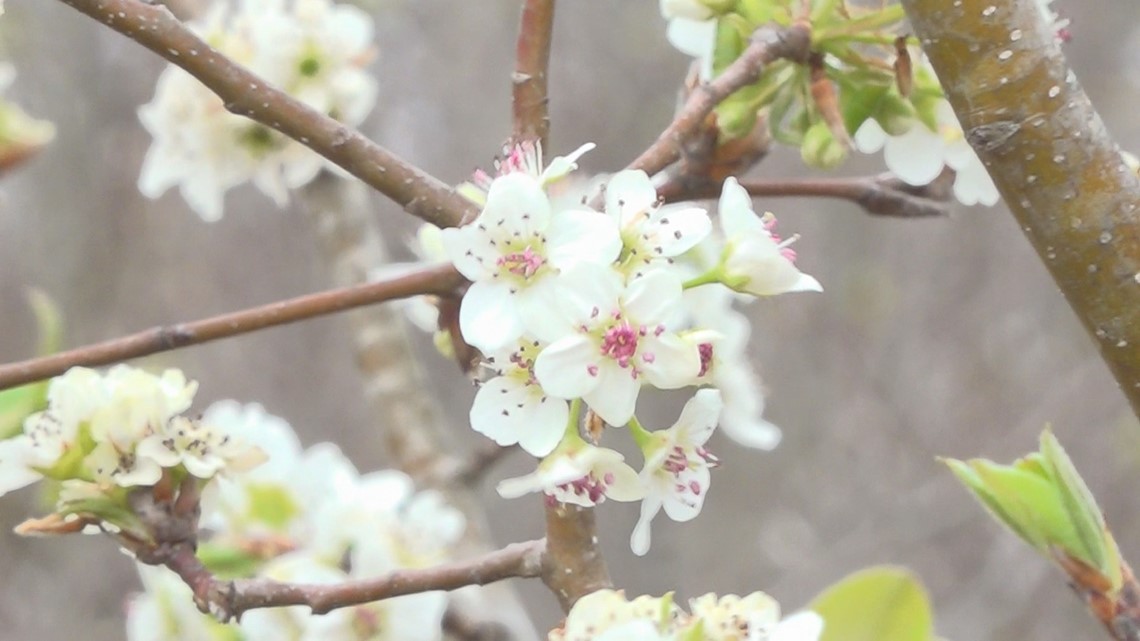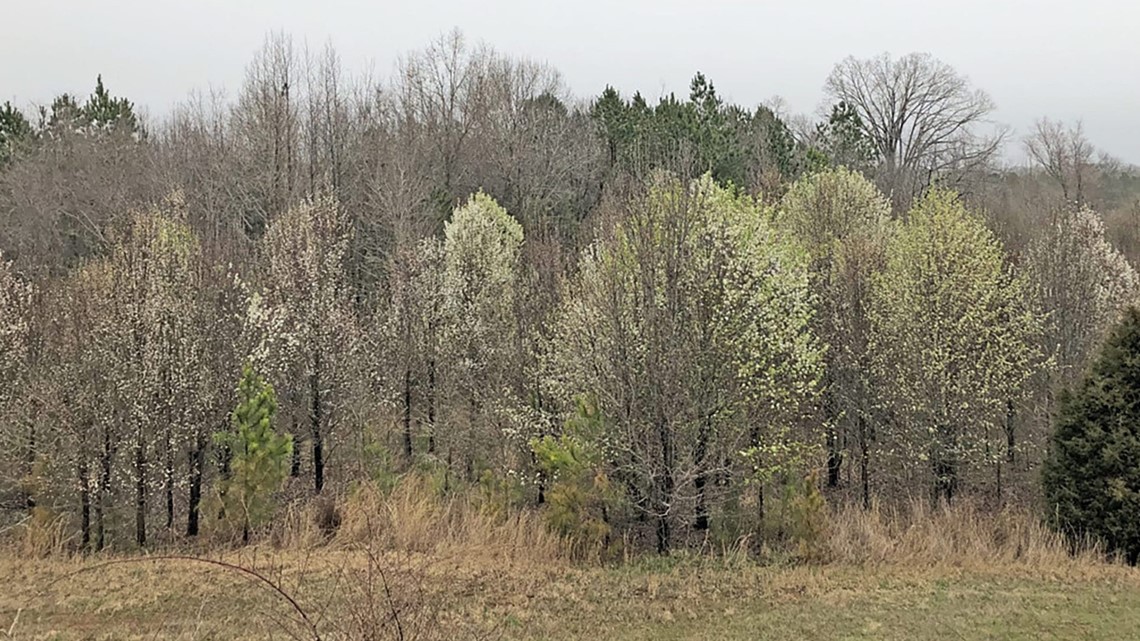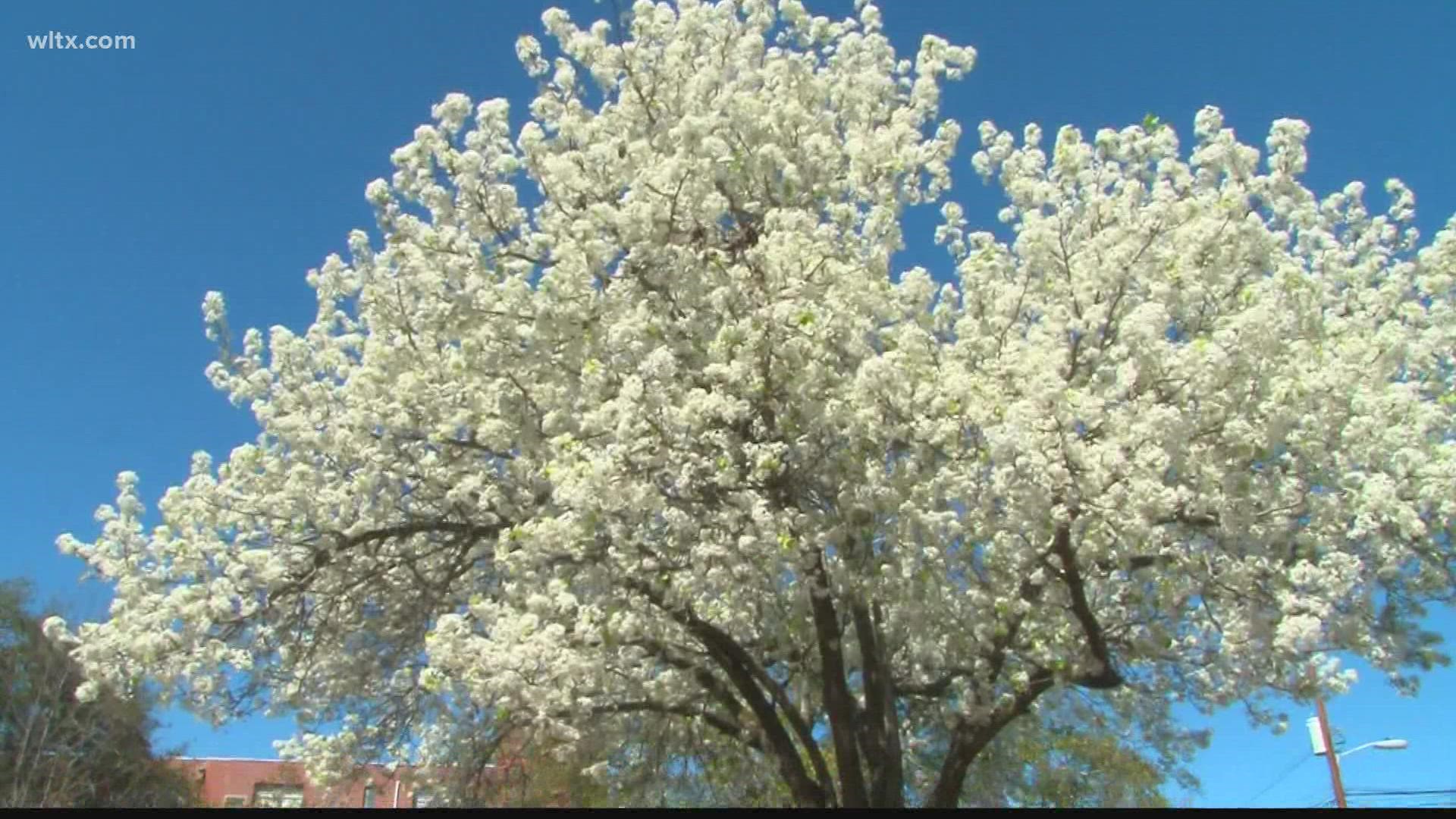COLUMBIA, S.C. — The Bradford Pear was introduced to the United States in the early 1900s from Asia. The ornamental pear was supposed to help with heat blight but ended up being better suited as decretive tree thanks to its iconic white flowers in the Spring and bright red leaves in the Fall. While, there seemed to be no downside to the tree, in the 90s it became apparent that the tree had been able to spread outside of people's yards and started to evolve into a very problematic tree referred to as the Callery Pear.


“They have thorns all over them, they grow and really big, thick bunches, they cause a lot of problems for people trying to get them off their land, the thorns can pop tires, the thorns have been known to injure animals and people… their one of the worst invasive plants we have in the region”
Dr. David Coyle, a forest health and invasive species professor with Clemson says along with those issues, the tree's weak structure makes it one of the first trees to have issues when it comes to falling onto structures.
RELATED: Local Forecast
The Callery Pear is really only enabled by the extensive use of the Bradford Pear so the best way to get rid of the Callery pears is to remove their source.


Here in Columbia, the spread of the tree can be seen on the side of roads and in fields across the city.
“They're spreading they move out into a lot of environments and as you can see this is almost all Callery Pear out here not much else can grow… and in forestry we typically will thin when the trees are growing too close together and when we come in and thin that gives these enough light to take over and they are not going anywhere" says David Jenkins, the Forest Health Coordinator with the SC Forestry Commission.
That's where the Bradford Pear Bounty Program comes into play. The program run by Clemson Extension and the South Carolina Forestry Commission allows South Carolina residents to receive native trees in exchange for a picture of a freshly cut Bradford Pear from their property.
By removing Bradford Pears, not only will that remove a weak tree that is susceptible to falling, but it removes the invasive tree causing the spread of the more problematic Callery Pear.
The next date for the Bradford Pear Bounty Program is in Sumter on February 26th. You must register beforehand on their website to get a free tree. If for some reason, you cannot participate this time around, there will be more events for the program scheduled in the future.
For all the information on the program you can visit: https://www.clemson.edu/extension/bradford-pear/

